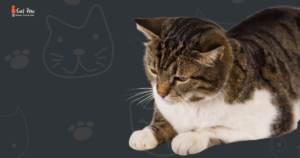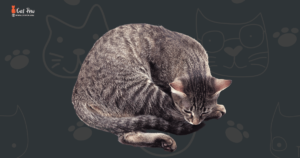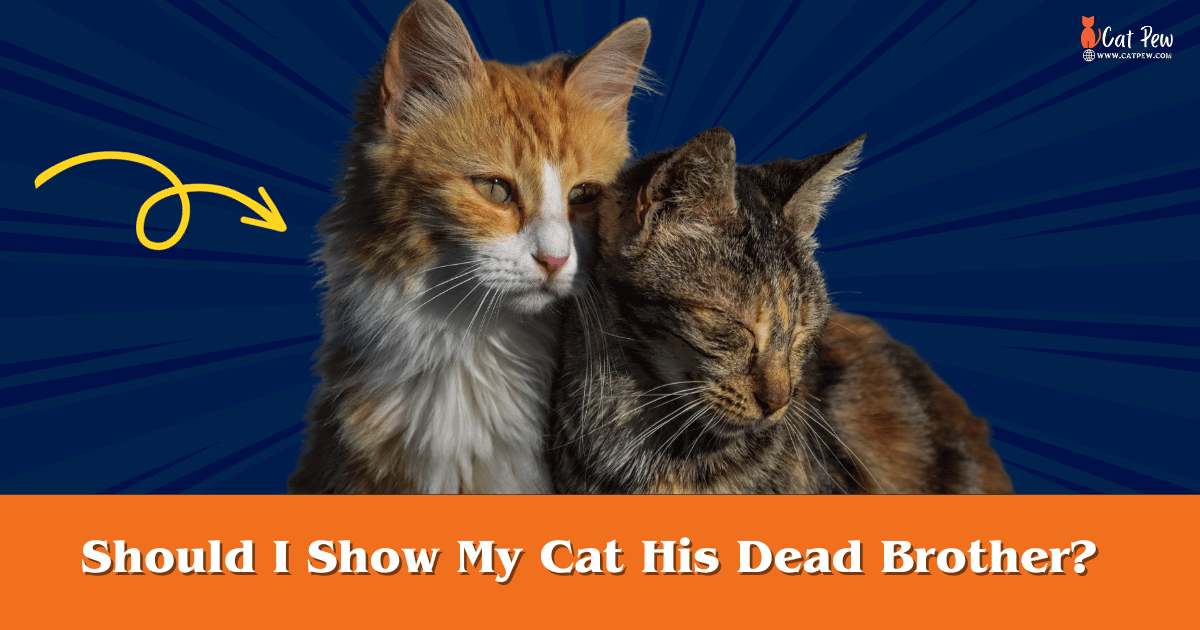Should I Show My Cat His Dead Brother?
No, it is not necessary to show your cat his dead brother. Doing so can cause unnecessary stress to your cat.
In moments of grief over a beloved pet, the question may arise: “Should I show my cat his dead brother?” While the intention might be to share the loss, it’s important to consider your feline friend’s perspective. Cats may not comprehend the concept of death as humans do. Showing them the deceased sibling could result in confusion or distress, potentially prolonging their adjustment to the loss. Instead, focus on providing your living cat with comfort, companionship, and a positive environment.
Understanding The Emotional Needs Of Cats

Cats are known for being independent creatures, but they can also form deep emotional connections with their feline companions and even their human caregivers. While cats may not show their emotions like humans, they have unique ways of expressing themselves and forming attachments.
When it comes to the loss of a feline companion, it can be a challenging time for both the cat and the caregiver. Understanding the impact of losing a feline companion is crucial in supporting and caring for your remaining cat.
Losing a feline companion is not just a loss to the cat’s caregiver but also profoundly affects the surviving cat. Cats are creatures of habit and can become deeply attached to their feline housemates. The loss of a companion can leave a void in their lives and cause them to experience grief.
Providing your cat with extra attention, love, and care is essential during this time. They may exhibit signs of grief, such as changes in appetite, increased vocalization, or withdrawal. Keeping a consistent routine and environment can provide stability and comfort during this adjustment period.
While it may be tempting to show your cat the deceased body of their feline companion, it is generally not recommended. Cats do not understand the concept of death in the same way humans do, and seeing the lifeless body may only confuse and distress them further.
Instead, allow your cat to grieve and adjust to the loss in their own way. Please provide them with plenty of opportunities for play and exercise, as physical activity can help release stress and promote positive emotions. Creating a safe and stimulating environment, with toys and hiding spots, can also help alleviate any anxiety or depression your cat may experience.
Additionally, consider gradually introducing a new feline companion if you feel ready to do so and if your cat is open to the idea. The introduction process should be slow and supervised, allowing both cats to get to know each other at their own pace.
Remember, every cat is unique, and their emotional needs may vary. Pay close attention to your cat’s behavior and consult a veterinarian or an animal behaviorist if you have concerns about their well-being.
The Process Of Grieving In Cats

When it comes to the process of grieving, it’s not just humans who experience a deep sense of loss and sadness. Cats, too, go through their version of mourning when they lose a feline companion. Recognizing the signs of grief in cats and understanding how to support them through this challenging time is crucial to ensuring their emotional well-being.
Recognizing The Signs Of Grief In Cats
Just like humans, cats show various signs when grieving the loss of a companion. Recognizing these signs can help us understand their emotions better and provide the necessary support. Some common symptoms of grief in cats include:
- Changes in behavior: Your cat may become more withdrawn, avoiding activities they once enjoyed. They might spend more time hiding or sleeping, showing a lack of interest in their surroundings.
- Loss of appetite: Grieving cats may experience a decrease in appetite or completely stop eating. It’s essential to monitor their food intake and ensure they stay hydrated.
- Increased vocalization: Cats may meow more frequently or cry excessively to express distress and seek attention.
- Aggression or irritability: Grief can sometimes manifest as aggression or irritability towards other pets or even their human caregivers. They may display uncharacteristically defensive behavior or become more easily startled.
Supporting Your Cat Through The Grieving Process
As responsible pet owners, we must provide emotional support and help our cats navigate grieving. Here are some ways you can support your cat during this challenging time:
- Establish a routine: Cats find comfort in practice, so maintaining their daily schedule as much as possible can help provide stability and minimize stress. Stick to regular feeding times, play sessions, and cuddle moments.
- Create a safe space: Set up a quiet and cozy area where your cat can retreat when they need some alone time. Include soft bedding, toys, and familiar scents to create a sense of security.
- Provide extra attention and affection: Shower your grieving cat with extra love and attention. Spend quality time together, engage in gentle play, and offer soothing strokes. Physical contact can help reassure them that they are not alone.
- Consider a companion: If appropriate, introducing another feline companion to your cat may help provide comfort and ease their loneliness. However, it’s essential to introduce them gradually and monitor their interactions closely.
- Consult with a veterinarian: If your cat’s grief intensifies or persists for an extended period, consider contacting a veterinarian. They can provide professional guidance and suggest additional ways to support your cat.
Handling Remains And Keeping Memories Alive

Facing the loss of a cherished pet is undoubtedly an emotionally trying journey. As we grapple with the void left by our beloved feline companions, questions like ‘Should I show my cat his dead brother?’ may arise, adding another layer to our grief. In this sensitive time, it’s crucial to navigate the process of handling your cat’s remains with care and compassion. This section offers guidance on appropriate ways to manage their final farewell and explores creative ideas for crafting memorials that serve as touching tributes, helping you preserve and honor the cherished memories of your beloved cat.
Appropriate Ways To Handle Your Cat’s Remains
When handling your cat’s remains, it is essential to approach the task with sensitivity and respect. Here are a few suggestions:
- Burial: If you have access to a private yard or a pet cemetery, burying your cat’s remains can be a meaningful way to lay them to rest. Choose a peaceful spot and consider placing a small marker or personalized stone to mark their final resting place.
- Cremation: Cremation is another option that offers flexibility. You can keep your cat’s ashes in an urn or scatter them in a location that holds special meaning to both of you. Some pet crematories even offer personalized urns or keepsake jewelry, allowing you to keep your companion close.
- Taxidermy: While it may not be for everyone, some individuals choose to have their deceased cat professionally preserved through taxidermy. This option requires careful consideration and a discussion with a qualified taxidermist to ensure the preservation is done ethically and respectfully.
Creating Memorials For Deceased Cats
Honoring your cat’s memory and creating a lasting memorial can provide solace and comfort as you navigate the grieving process. Here are some ideas to consider:
- Photo Collage: Compile a collection of your favorite photos of your cat and create a beautiful photo collage to display in your home. This visual tribute will allow you to reminisce about the special moments you shared.
- Memory Box: Gather cherished mementos, such as a favorite toy, collar, or a lock of fur, and create a memory box. Please keep it in a place where you can easily access it and reflect on the memories.
- Garden Memorial: If you have a garden or outdoor space, consider creating a memorial garden to honor your cat. Plant their favorite flowers or plants near a statue, marker, or engraved stone dedicated to their memory.
- Donation: Donating to an animal shelter or rescue organization in your cat’s name can be a meaningful way to celebrate their life and help other needy animals. Consider donating funds supplies, or volunteering your time to support their cause.
Remember, the most essential aspect of creating a memorial is that it reflects your unique relationship with your cat. Take the time to choose a tribute that resonates with you and allows you to continue cherishing their memory for years.
Introducing A Deceased Cat’s Presence To The Surviving Cat

Introducing a deceased cat’s presence to a surviving cat can be delicate. It is essential to consider the emotional well-being of the surviving cat and take gradual steps towards familiarizing them with the scent and memory of their deceased companion. Addressing the surviving cat’s emotional state and gradually introducing the dead cat’s scent can create a healing environment and help them adjust to the loss.
Evaluating The Surviving Cat’s Emotional State
Before introducing a deceased cat’s presence, it is crucial to evaluate the emotional state of the surviving cat. Cats, like humans, experience grief and loss. Some signs of grief in cats include changes in appetite, sleeping patterns, and behavior. If the surviving cat is showing signs of severe distress, it may be beneficial to provide comfort and support before attempting any introduction.
Gradual Introduction Of The Deceased Cat’s Scent To The Survivor
One method to gently introduce the deceased cat’s presence to the surviving cat is through their scent. Cats rely heavily on scent as a means of recognition and communication, so gradually familiarizing the surviving cat with the smell of their departed companion can help in the grieving process.
| Steps for Gradual Introduction of Scent: |
|---|
| 1. Start by introducing an item that carries the deceased cat’s scent, such as a blanket or toy, into the living space of the surviving cat. |
| 2. Allow the surviving cat to sniff and investigate the item at their own pace, providing reassurance and support if needed. |
| 3. Gradually increase the exposure to the deceased cat’s scent by placing the item in areas where the surviving cat spends time or near their sleeping area. |
| 4. Monitor the surviving cat’s behavior during these scent introductions, looking for signs of acceptance, curiosity, or emotional distress. |
| 5. Once the surviving cat shows signs of tolerance and comfort, continue introducing more items with the deceased cat’s scent, creating a gradual association. |
By following these steps, the surviving cat can slowly become accustomed to the presence of their deceased companion and find solace in their memories. Remember, each cat grieves and reacts differently, so it is essential to be patient and attentive throughout the entire process. Allow your cat to guide the pace of the introduction and offer support and affection as they adjust to the loss.
Potential Benefits And Outcomes Of Showing The Deceased Cat

Potential Benefits and Outcomes of Showing the Deceased Cat
When a beloved pet passes away, it leaves a void in our lives that is difficult to fill. In the case of cats, who are known to form strong bonds with their feline companions, the loss can be particularly challenging for the surviving cat. While some may question whether showing the deceased cat to the surviving feline is appropriate or beneficial, some potential benefits and outcomes should be considered.
Promoting Closure And Acceptance
One potential benefit of showing the deceased cat to the survivor is the opportunity for closure and acceptance. Cats, like humans, experience grief and may go through a mourning process. Allowing the surviving cat to see its deceased companion will enable them to acknowledge the loss and accept the absence. This visual confirmation can provide a sense of closure, helping the surviving cat understand that their companion is no longer present.
Furthermore, showing the deceased cat can assist in the grieving process by giving the surviving cat a chance to say goodbye. Cats communicate through scent and visual cues, and by allowing them to see the deceased cat, they can process the loss in their own way. This display can help the surviving cat understand that their companion will not be returning, leading to acceptance and ultimately aiding in healing.
Strengthening The Bond Between The Survivor And The Deceased Cat
Another potential benefit of showing the deceased cat is the ability to strengthen the bond between the survivor and the dead companion. While exposing the surviving cat to their departed companion may seem counterintuitive, this visual interaction can remind them of the time they spent together, deepening their connection.
By seeing the deceased cat, the survivor may remember the shared experiences, the moments of play, and the comfort they provided each other. This visual stimulus can evoke positive memories, triggering emotions of love and affection towards their deceased companion. This strengthening of the bond between the survivor and the dead cat can comfort the surviving cat, offering solace during their grief.
Frequently Asked Questions On Should I Show My Cat His Dead Brother
Should I Let My Cat See Her Dead Brother?
No, it is not necessary to let your cat see her dead brother. Cats do not have the same understanding of death as humans do and may become stressed or confused by the sight of a deceased sibling. It is best to provide comfort and support to your cat during this time.
What Happens When You Have 2 Cats And One Dies?
When one of your cats dies, it can be a demanding experience for you and your surviving cat. Give your cat time to grieve and provide extra love and attention. Consider getting a new companion over time, but ensure a proper introduction to reduce stress.
What To Do If Your Cat’s Brother Dies?
When your cat’s brother dies, give the grieving cat extra love and attention. Maintain their routine, feed them well, and engage in playtime to distract them. Consider getting another cat companion to help them with their loss and provide companionship.
Do Cats Know When Their Brother Died?
Cats can sense when their sibling has died due to their strong intuitive abilities and heightened senses. They may display signs of mourning, such as decreased appetite, restlessness, and seeking their sibling’s scent.
Can showing a pet a dead pet help them understand death?
No, animals do not process death in the same way humans do and may become confused or distressed.
Is it appropriate to show a pet a dead pet?
How Can I Recognize if My Cat is Distressed?
Signs of distress include changes in eating habits, excessive grooming, or withdrawal. Consult a vet if you notice prolonged distress.
Conclusion Of Should I Show My Cat His Dead Brother
When deciding whether to show a cat its dead brother, it’s crucial to prioritize the well-being and emotional health of both the cat and the owner. While some experts advise against it since cats do not process death in the same way as humans, others argue that it can help with closure.
Ultimately, it is essential to consider the unique dynamics of each situation and consult a veterinarian to make the best decision for your feline companion.

Winston
I'm Winston, the author of this feline-focused (Catpew.com) blog . My love for cats goes back to my childhood, when I spent countless hours playing with my family's tabby, Mittens. This furry friend instilled in me a deep appreciation for the unique personalities, playful nature, and unconditional love that cats offer.

